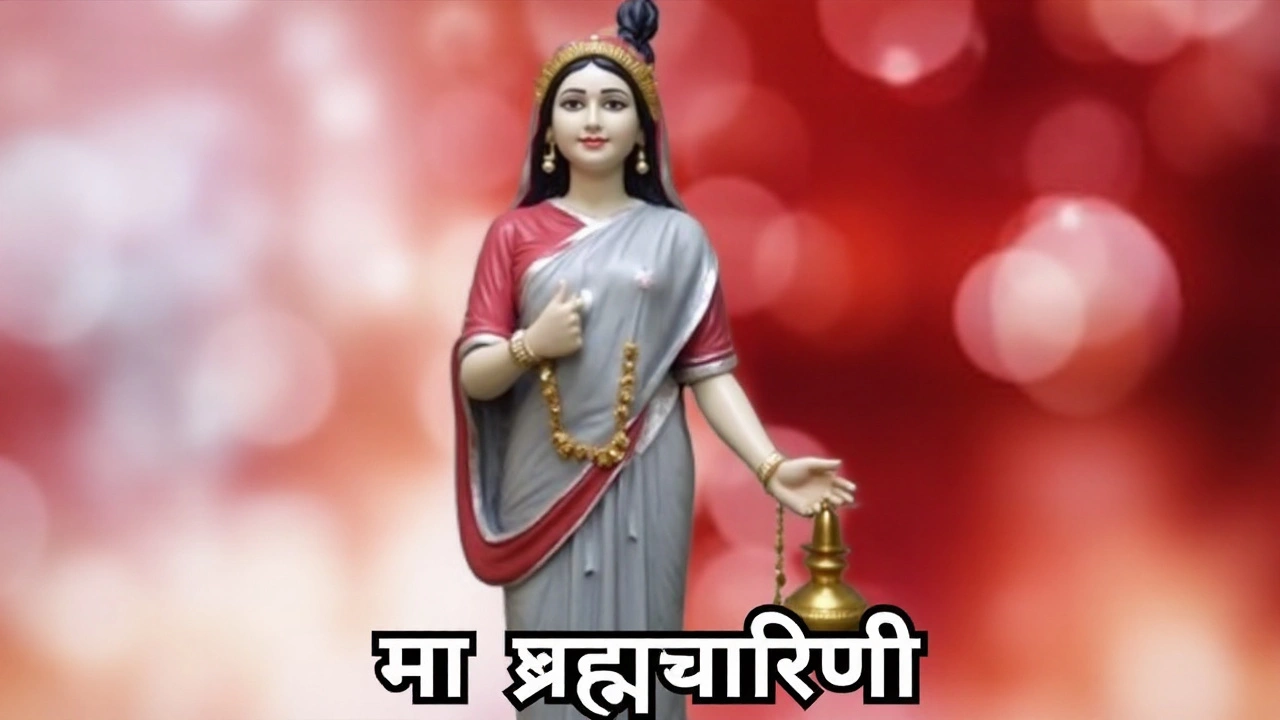Maa Brahmacharini – Who She Is and Why She Matters
If you’ve ever heard the name Maa Brahmacharini during Navratri, you might wonder what makes her special. She is the second form of Goddess Durga, a symbol of pure devotion and inner strength. Unlike the fierce warrior images, Brahmacharini shows a calm, meditative side that helps people stay focused on their goals.
People turn to her when they need patience, self‑control, or the courage to stay on a path that seems tough. She teaches that true power comes from inner discipline, not just external battles.
What Maa Brahmacharini Symbolizes
In most pictures, Brahmacharini stands with a rosary in one hand and a kamandalu (water pot) in the other. The rosary represents constant prayer, while the water pot stands for purity. She wears simple clothing, emphasizing that material wealth isn’t essential for spiritual growth.
Her name breaks down into “Brahma” (the ultimate reality) and “Charini” (one who walks). So she’s the one who walks the path of Brahman – the ultimate truth. This makes her a perfect guide for anyone who wants to practice meditation, study scriptures, or simply live a more purposeful life.
How to Worship Maa Brahmacharini
Worship doesn’t have to be complicated. Start with a clean space, a small statue or picture of the goddess, and a few fresh flowers. Light a candle or a lamp to invite her energy.
Recite the Brahmacharini mantra – “Om Devi Brahmacharinyai Namaha” – three to five times a day. You can also read a short passage from the Devi Mahatmya that describes her calm determination. Doing this while focusing on your breath helps deepen the connection.
If you’re observing Navratri, devote the second day to her. Offer a simple vegetarian meal, preferably something light like fruits or kheer. The key is to keep the offering pure and heartfelt.
Many devotees also keep a rosary (japa mala) and chant the mantra for each bead. This mirrors the goddess’s own practice of constant prayer. Over time, you’ll notice more patience and clarity in daily challenges.
Remember, worshiping Maa Brahmacharini isn’t about grand ceremonies. It’s about building a habit of focus and purity. Even a five‑minute quiet moment each morning can be her altar.
Some families also set up a small “Brahmacharini corner” in the home, placing a picture, a small bowl of water, and a handful of sandalwood powder. The scent of sandalwood is believed to calm the mind, making it easier to meditate.
When you feel stressed or distracted, pause, close your eyes, and picture the goddess standing peacefully, holding her rosary. Imagine her calm spreading into your thoughts. This simple visual cue can reset your mindset quickly.
In modern life, many people use Brahmacharini’s energy to stay disciplined in studies, fitness, or career goals. Think of her as the inner coach that reminds you to stick with the plan, even when it gets tough.
So whether you’re new to Hindu deities or have been worshipping for years, adding Maa Brahmacharini to your practice can bring balance, focus, and a deeper sense of purpose. Try a small routine today and see how her quiet strength can change your day.

The second day of Shardiya Navratri 2024 (Oct 4) is devoted to Maa Brahmacharini. Learn the significance, auspicious timings, green color rule, detailed puja vidhi, special bhog and the spiritual benefits of honoring this steadfast form of Goddess Durga.
Continue Reading





